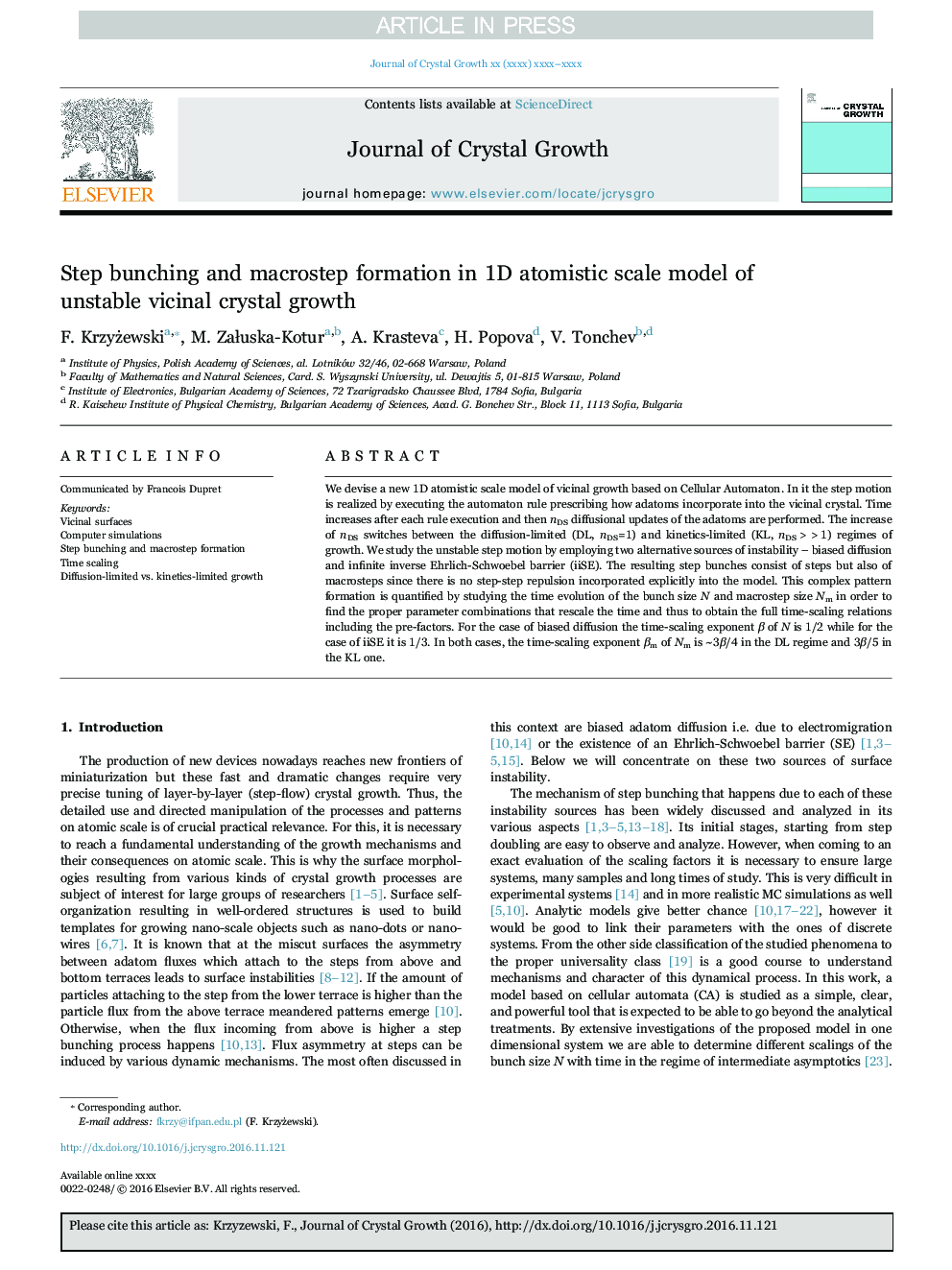| Article ID | Journal | Published Year | Pages | File Type |
|---|---|---|---|---|
| 5489234 | Journal of Crystal Growth | 2017 | 5 Pages |
Abstract
We devise a new 1D atomistic scale model of vicinal growth based on Cellular Automaton. In it the step motion is realized by executing the automaton rule prescribing how adatoms incorporate into the vicinal crystal. Time increases after each rule execution and then nDS diffusional updates of the adatoms are performed. The increase of nDS switches between the diffusion-limited (DL, nDS=1) and kinetics-limited (KL, nDS>>1) regimes of growth. We study the unstable step motion by employing two alternative sources of instability - biased diffusion and infinite inverse Ehrlich-Schwoebel barrier (iiSE). The resulting step bunches consist of steps but also of macrosteps since there is no step-step repulsion incorporated explicitly into the model. This complex pattern formation is quantified by studying the time evolution of the bunch size N and macrostep size Nm in order to find the proper parameter combinations that rescale the time and thus to obtain the full time-scaling relations including the pre-factors. For the case of biased diffusion the time-scaling exponent β of N is 1/2 while for the case of iiSE it is 1/3. In both cases, the time-scaling exponent βm of Nm is ~3β/4 in the DL regime and 3β/5 in the KL one.
Related Topics
Physical Sciences and Engineering
Physics and Astronomy
Condensed Matter Physics
Authors
F. Krzyżewski, M. ZaÅuska-Kotur, A. Krasteva, H. Popova, V. Tonchev,
